A septic tank filling with groundwater is one of those problems people face in areas with a high water table.
The high water table is therefore one of the important environmental factors to consider before installing a septic tank.
Some people are not even aware of this factor until they start facing a septic tank backup.
But, what if you already have a septic tank set in place, and it’s filling with groundwater? Is there anything you can do other than to completely replace the septic system?
Keep reading as we provide all the valuable answers on this topic.
Septic Tank Keeps Filling With Groundwater
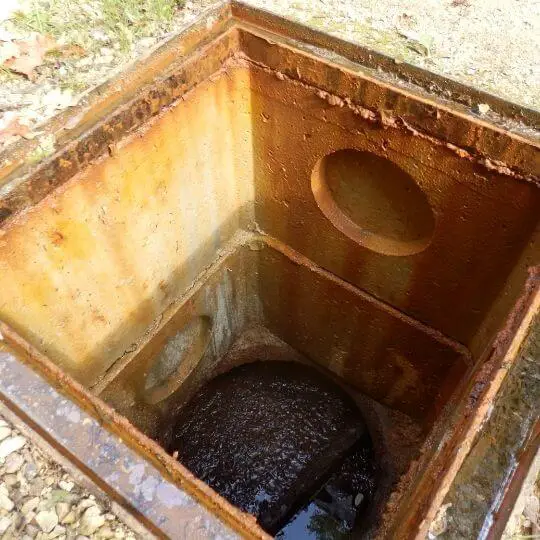
A traditional septic tank system works perfectly for many homes. However, even before installing it, you do need to consider the environmental factors in your area that may affect this system.
Groundwater is one of them. What is groundwater and how can it negatively impact your septic tank?
Groundwater is the water that exists beneath the ground surface, and fills the places between the soil and rock. [1]
This is a completely natural phenomenon, and groundwater is actually recharged by rainwater and can be found anywhere.
However, the levels of groundwater can change, especially after a period of heavy rainfalls. What happens then (in some areas) is that the groundwater levels get too high above the normal levels.
This, in turn, messes with the septic tank systems in that area, because it further saturates the soil of the drain field. The wastewaters from the tank can’t be released to the drain field when it’s saturated.
The wastewater or effluent from the tank then has nowhere to go, so this can cause a septic backup very easily.
Does Drain Water Go Into Septic Tank?
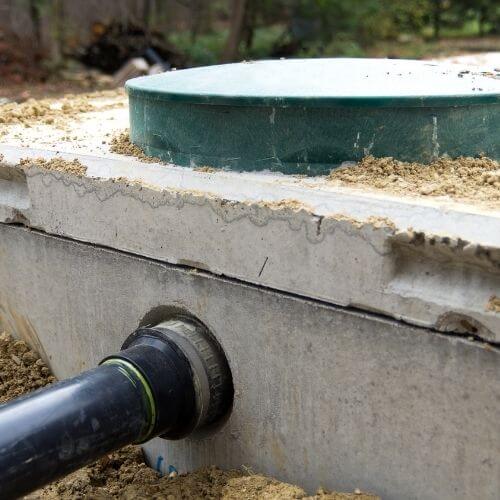
The drain water actually means all of the wastewater that’s coming directly from your home. In that sense, the answer is yes.
Understanding how the septic tank works will help you tackle any potential problems with this system.
All of the water you use to shower, wash dishes, and flush toilets, collectively travels the drain pipes and goes into the tank.
Then, the septic tank further breaks down this waste into three levels:
- The Sludge Layer – The dense components of the wastewater collect at the very bottom of the tank.
- The Liquid Effluent – The liquid effluent is what takes up the most space in the tank. It’s the wastewater that is left when the sludge and scum are filtered out.
- The Scum Layer – The oils from the wastewater float at the very top of the tank, and get separated from the rest of the tank’s contents. [2]
What helps the septic tank dissolve and break down the wastewater content are helpful bacteria.
These bacteria can be destroyed when the tank level is unbalanced. Those are the situations where too much oil, medications, and undissolvable things find themselves inside the tank.
The tank needs to get pumped every couple of years in order to maintain the levels in the tank in proper shape.
Why Does My Septic Tank Keep Filling Up?

There are several reasons your septic tank keeps filling up.
Avoiding regular maintenance is one of them. In other words, the septic tank needs to get pumped every couple of years.
The other thing to consider is – septic tanks are always full to some degree. The levels in the tank always need to be high enough for filtered effluent to leave the tank.
This is because the outlet is placed on the top or upper part of the tank. The effluent is released from this outlet, so the tank always remains full to that level.
It’s when they are overfilled that you need to take some action.
NOTE: To check septic tank levels, discover how to find your septic tank and also how to check if a septic tank is full.
Heavy rains, storms, and high groundwater levels can all affect the septic tank. This is because the filtered effluent released from the tank travels into the drain field.
High groundwater levels oversaturate the drain field, making it impossible for the septic tank to release the effluent. That’s mainly because the soil in the drain field can’t absorb any more water than it already did.
A similar thing happens after the heavy rain. The only difference is that (in that case) the water is saturating the field from above, and not underneath the soil.
But, since the groundwater is directly affected by the rain, we could say both of these things can impact how your septic tank functions.
Understanding High Water Table
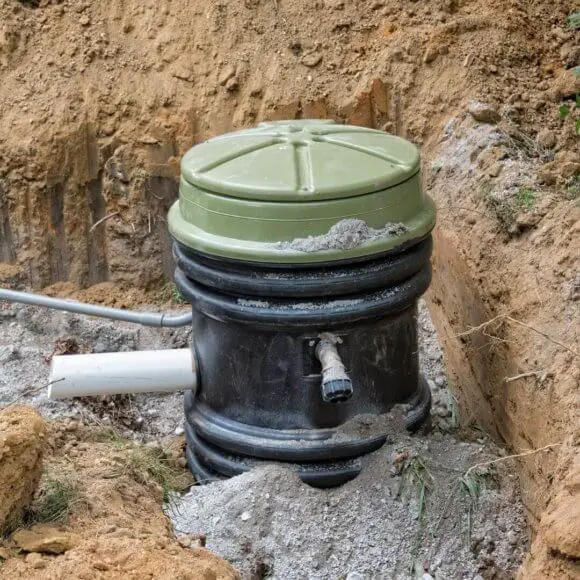
A more professional term for groundwater levels being higher than normal is the high water table.
A high water table simply indicates groundwater levels so high that it interferes with your septic system.
What typically happens in this scenario is more than what we just explained above. Meaning – it’s not just that the drain field gets too saturated, and the septic tank has nowhere to release the effluent.
Usually, this is followed by the septic tank also getting flooded.
A high water table can mess up your tank, as the groundwater can enter the tank from an outlet area on the tank. This is a process called back-flooding.
Back-flooding is the definition of groundwater entering your septic tank.
In normal circumstances, no external water would enter the tank. This includes both the outlet entrance and outlet pipe of the tank.
This is because the tank is designed to pump out the effluent and wastewater, not to receive more water through it.
Septic Tank Filling With Groundwater Without Rain
Perhaps you’ve noticed that your septic tank gets filled with groundwater, even without the rainy periods. Now you’re wondering if you were just unlucky to pick the area with high water levels.
However, groundwater is never static. It’s very dynamic, and its levels are prone to constant changes due to other outside factors.
Let’s take a look at what those are, so we can later consider what you can do about it.
- Melting Snow
A thing that often gets overlooked is the effect that melting snow can have on the septic system. When the snow starts melting away, large puddles of water can form in your yard, saturating the drain field as well.
- Aquifer Storage Changes
Since aquifers are made from solid geological material, a little addition to the water supply will result in a much greater water level. The aquifer’s storage constantly changes due to numerous environmental factors, not just rain.
NOTE: Aquifers are porous rocks and other underground materials saturated in groundwater. [3]
- Aquifer Deformations
Aquifer deformation can be caused by numerous outside factors as well.
For example, large trucks and trains can compress the soil so much that it causes the groundwater to fluctuate in levels.
Earthquakes and the gravitational effects of the Sun and Moon can also impact the levels of groundwater and cause it to rise.
- Atmospheric Pressure Changes
The changes in the weight of the atmosphere can also cause the groundwater levels to change.
Usually, it’s when the air pressure decreases that the water levels start to rise (and vice versa). [4]
How to Drain Water From Septic Tank
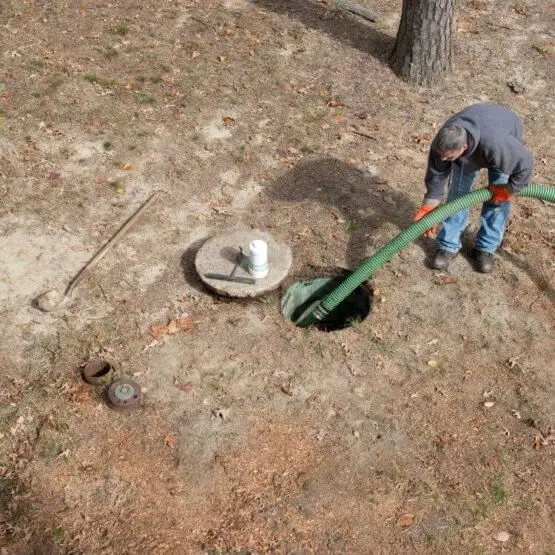
Before you even consider emptying your septic tank, you’ll need to wait for the storm to end first.
This is a very important piece of advice – the one you should not ignore.
If you decide to empty the tank while it’s still wet outside, you can cause your tank to float up in the soil.
Secondly, this is usually not a DIY operation. To drain the septic tank, you’ll need to phone a professional service.
That’s because they have a special vehicle designed to suck out the waste or sewage. These vehicles use a vacuum with a hose, that sucks up the waste and stores it inside the vehicle’s tank.
How often tanks should be emptied will greatly depend on the size of the tank. However, if you’re living in an area where water table levels are often high, this can play a part too.
For example, smaller septic tanks should be pumped once per year, whereas bigger ones should be pumped once every 2-4 years.
But you definitely shouldn’t wait for the septic tank to fill up and cause damage in order to get it pumped. Consult with a service on how often your septic tank needs pumping.
The cost for septic tank pumping will depend on the travel distance, the accessibility of the tank, and also the amount of waste. You will also be asked to inform the service of the approximate amount of waste beforehand.
In the meantime, you should explore what to put in a septic tank to break down solids.
How to Keep Groundwater Out of Septic Tank
Generally, there isn’t much that can be done in order to completely isolate the septic tank from the groundwater. At last, the tank is in the soil, and within that soil, there’s always at least some groundwater.
You also have no control over the environmental factors such as the gravitational effects of the Sun and Moon or earthquakes.
The best thing you can do is to maintain the septic tank by scheduling a regular pumping at recommended intervals.
Another thing you can do is to limit the amount of water usage during the storm and heavy rain periods. This way, you won’t stress the septic tank system even more than it already is.
Here are some things to consider when minimizing the water usage during those times:
- Flush toilets only when necessary
- Seal any leaking bathroom or kitchen fixtures
- Use only the necessary amounts of water
- If possible, redirect the water from roof gutters away from the drain field
- Also, don’t direct the sump dump water from the basement that way
Other Causes of Septic Tank Filling With Groundwater
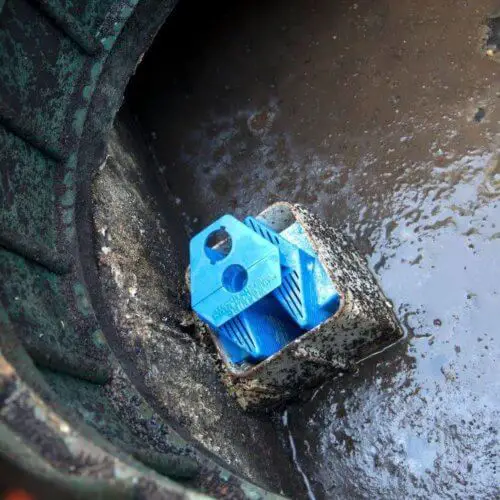
Oftentimes, there can be leaks within your septic line system that are allowing the groundwater to enter.
This is something that professional service will make sure to check. There are cases where groundwater isn’t causing back-flooding (entering the tank’s outlet).
What happens very often is that the connection between a septic tank and sewer drain isn’t sealed properly. This can allow the entrance of the groundwater into the tank.
In this case, the service will simply seal the connection of these two sewer system parts again.
If they don’t see the groundwater causing back-flooding, there may also be some other entry points causing this to happen.
Other than the faulty seal already mentioned, the tank’s cover, inspection covers, or the tank’s riser base can be improperly installed or sealed.
How To Compensate for High Water Table
There are other things you can do in the case of a septic tank filling with groundwater due to a high water table.
Look into the option of buying a bigger septic tank. By having a size or two bigger tank, you will reduce the number of times it gets filled.
Also, inspect how long it takes to replace the septic tank.
You can also install a filter system between your septic tank and the drain field. Consider installing sand filters, as these will filter out the wastewater before it’s released into the drain field. [5]
And if all else fails, you can always consider some inexpensive septic tank alternatives.
Final Word
Having a septic tank filling with groundwater can be quite frustrating. This causes the entire sewer system of your home to go off balance, potentially contaminating the drinking water as well.
There are numerous factors that can cause groundwater levels to rise. Most of those are environmental factors over which we don’t have much control.
However, having a septic tank in an area with a constantly high water table is still possible. You just need to pump the tank regularly, minimize the usage of water, and size up if possible.
Read Next: Can The Septic Tank Be 100 Feet From The House

Michael Davis is a heating & plumbing expert who currently works as independent contractor in SC. He also writes for Plumbertip.
For almost 10 years he worked on various plumbing tasks across South Carolina.


